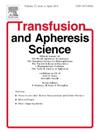Successful of autologous hematopoietic stem cell mobilization with plerixafor combined with G-CSF in pediatric neuroblastoma patients, a single center experience
IF 1.4
4区 医学
Q4 HEMATOLOGY
引用次数: 0
Abstract
Background
Neuroblastoma (NB) is the most common extracranial solid tumor in pediatric. In highrisk NB patients, the 5-year overall survival rate (OS) remains a stark < 50 % with conventional therapies. Autologous hematopoietic stem cell transplantation with high dose chemotherapies was used in poor prognosis and high-risk patients.Today, Plerixafor is used to increase stem cells mobilization in patients who are candidates for autologous transplantation.
Objective
This study examined safety and efficacy Plerixafor is administered as a subcutaneous injection in pediatric NB patients for stem cell mobilization
Study Design
A cohort of 19 pediatric neuroblastoma (NB) patients underwent autologous hematopoietic stem cell transplantation (HSCT) between February 2017 and April 2019, receiving G-CSF mobilization only. Subsequently, 37 NB patients underwent HSCT between December 2019 and October 2023, receiving both G-CSF and plerixafor for mobilization (auto-HSCT).
Results
The final product CD34 cell dose /kg was evidently higher in combination group at 5.363 ± 4.243 vs. G-CSF group at 2.827 ± 3.586 × 106(P value= 0.001). Neutrophils and platelet engraftment were occurred sooner in combination group compared with G-CSF group. The 1-year overall survival (OS) rate for the G-CSF and G-CSF-and-plerixafor combination group was 70.8 % and 63.3 %, respectively (P = 0.874). No statistically significant difference in OS or disease-free survival (DFS) was observed between the two treatment groups.
Conclusion
The results show that plerixafor may be safe and effective in NB pediatric patients in routine clinical practice. It was well tolerated in NB patients and no specific side effects were observed. It was not associated with improved survival.
在小儿神经母细胞瘤患者自体造血干细胞动员联合百利沙韦联合G-CSF的成功,单中心经验。
背景:神经母细胞瘤(Neuroblastoma, NB)是儿科最常见的颅外实体瘤。目的:本研究考察了普利沙福皮下注射用于儿科NB患者干细胞动员的安全性和有效性研究设计:一组19名儿童神经母细胞瘤(NB)患者在2017年2月至2019年4月期间接受了自体造血干细胞移植(HSCT),仅接受G-CSF动员。随后,37名NB患者在2019年12月至2023年10月期间接受了HSCT,同时接受了G-CSF和plerixafor动员(auto-HSCT)。结果:联合组最终产物CD34细胞剂量(5.363 ± 4.243)明显高于G-CSF组(2.827 ± 3.586 × 106)(P值= 0.001)。与G-CSF组相比,联合用药组出现中性粒细胞和血小板的时间更早。G-CSF和G-CSF + plerixafor联合治疗组的1年总生存率(OS)分别为70.8 %和63.3 % (P = 0.874)。两组患者的OS和无病生存期(DFS)无统计学差异。结论:在常规临床实践中,哌立沙福对NB患儿是安全有效的。NB患者耐受性良好,未观察到特异性副作用。它与生存率的提高无关。
本文章由计算机程序翻译,如有差异,请以英文原文为准。
求助全文
约1分钟内获得全文
求助全文
来源期刊
CiteScore
3.60
自引率
5.30%
发文量
181
审稿时长
42 days
期刊介绍:
Transfusion and Apheresis Science brings comprehensive and up-to-date information to physicians and health care professionals involved in the rapidly changing fields of transfusion medicine, hemostasis and apheresis. The journal presents original articles relating to scientific and clinical studies in the areas of immunohematology, transfusion practice, bleeding and thrombotic disorders and both therapeutic and donor apheresis including hematopoietic stem cells. Topics covered include the collection and processing of blood, compatibility testing and guidelines for the use of blood products, as well as screening for and transmission of blood-borne diseases. All areas of apheresis - therapeutic and collection - are also addressed. We would like to specifically encourage allied health professionals in this area to submit manuscripts that relate to improved patient and donor care, technical aspects and educational issues.
Transfusion and Apheresis Science features a "Theme" section which includes, in each issue, a group of papers designed to review a specific topic of current importance in transfusion and hemostasis for the discussion of topical issues specific to apheresis and focuses on the operators'' viewpoint. Another section is "What''s Happening" which provides informal reporting of activities in the field. In addition, brief case reports and Letters to the Editor, as well as reviews of meetings and events of general interest, and a listing of recent patents make the journal a complete source of information for practitioners of transfusion, hemostasis and apheresis science. Immediate dissemination of important information is ensured by the commitment of Transfusion and Apheresis Science to rapid publication of both symposia and submitted papers.

 求助内容:
求助内容: 应助结果提醒方式:
应助结果提醒方式:


